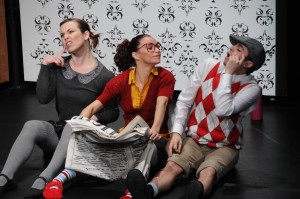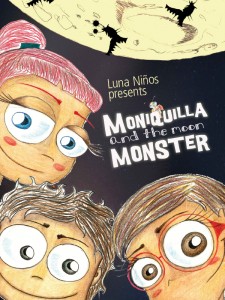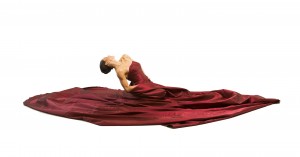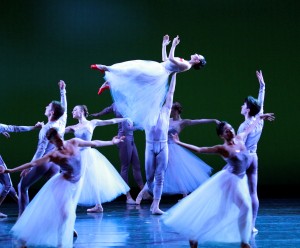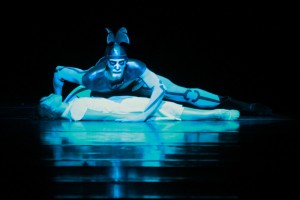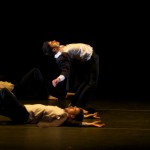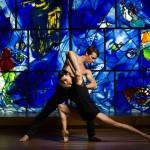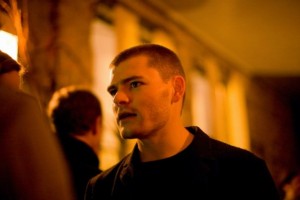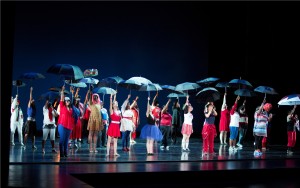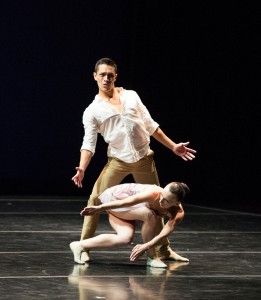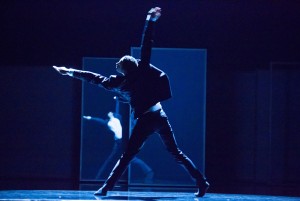
Hubbard St dancer Jonathan Fredrickson in Alejandro Cerrudo's "One Thousand Pieces". Photo by Todd Rosenberg.
The lights dim, the audience settles and music begins to play. The tone is set for an evening of wonder and Hubbard Street Dance Chicago does not disappoint. One Thousand Pieces, inspired by Marc Chagall’s America Windows at the Art Institute of Chicago, celebrates the company’s 35th anniversary season with the first full-length work for the company and the first full-evening work by one choreographer – resident choreographer Alejandro Cerrudo – around a central theme. Bringing both the main company and HS2 dancers on stage together for this world premiere, Cerrudo takes this world-renowned company to a new level of its ever-reaching creative heights.
The curtain opens at the Harris Theater to a lone dancer (Jonathan Fredrickson, hanging briefly on to the ascending curtain) in front of stunning visuals. Blue hues flood the stage highlighting moveable set pieces, some opaque, some clear, some reflective, that look like staggered pieces of glass. A special mirrored Marley floor adds to the reflection/glass theme. Costumes are subdued with dark sheer tunics with a hint of pink or blue underneath for the ladies and dark blue pants with sheer black shirts for the men. The score, a collage of music from Philip Glass and designed by Cerrudo, completes the mood. Once the awe of the scene takes hold. The audience is ready for the dance.
Dancers slide in and out of duets, trios and group work with control and ease. Cerrudo features some – Ana Lopez and Garrett Anderson in frequent, lovely duets threaded throughout, Fredrickson, Jacqueline Burnett, Jessica Tong, Meredith Dincolo and Jesse Bechard – but it’s the moments with all 24 dancers on stage together that really make an impact. The end of Part 1 has everyone doing the same movement, but in alternating directions off three vertical lines having a reflective effect – aided with the mirrors behind them – as if they are multiplying. An interlude between Parts 1 and 2 has Fredrickson floating above the audience like the spirit “Ariel” in The Tempest (from a way too visible harness) reciting a romantic text from an excerpt of Glass’ Einstein on the Beach: Knee Play 5 (*full text below). It could be a nod to the angel or literary figure from the Windows, but that seems to literal for Cerrudo. It’s more likely a love letter to art, to dance, to Glass, to his company, to his fellow dancers and to the audience.
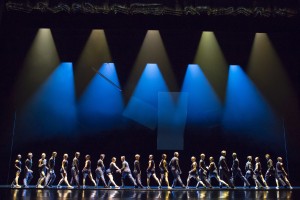
Hubbard St dancers in Alejandro Cerrudo's "One Thousand Pieces". Photo by Todd Rosenberg.
Part 2 brings together the brilliance of the choreography, sets, costumes (both by Thomas Mika), lighting (Michael Korsch), special effects (fog courtesy of Big Shoulders Productions) and dancing in a perfect storm of magic. Shining sparkles dot the floor looking like someone scattered shattered glass across the stage. As dancers move across, the realization hits that it’s water. Three light/fog columns flow down like waterfalls and dancers appear through them from the darkened stage behind to dance in the water. Simply gorgeous.
With that visual still in mind, the shock of intermission was a disappointment and it was a bit difficult to get that vibe back for Part 3, which continued with fantastic dancing from the entire Hubbard Street crew. All the dancers brought their A-game (new company members Laura O’Malley and Quinn Wharton fit in seemlessly), but the true star of the show was Cerrudo himself. If he’s thinking about topping this any time soon, he better get started now. Wow.
One of the dancers posted to “come get lost” on his Facebook page yesterday. It’s easy to get lost in this world Cerrudo creates completely. A program note quotes Chagall, “Stained glass has to be serious and passionate. It is something elevating and exhilarating.” Serious, passionate, elevating, exhilarating – the perfect description of One Thousand Pieces.
Hubbard Street Dance Chicago presents One Thousand Pieces at the Harris Theater, 205 E. Randolph St., through Sunday, October 21. Tickets are $25-$99. Call 312.850.9744 or visit hubbardstreetdance.com.
Harris Theater box office: 312.334.7777.
*Original text source: Samuel Johnson:
The day with its cares and perplexities is ended and the night is now upon us. The night should be a time of peace and tranquility, a time to relax and be calm. We have need of a soothing story to banish the disturbing thoughts of the day, to set at rest our troubled minds, and put at ease our ruffled spirits.
And what sort of story shall we hear ? Ah, it will be a familiar story, a story that is so very, very old, and yet it is so new. It is the old, old story of love.
Two lovers sat on a park bench with their bodies touching each other, holding hands in the moonlight.
There was silence between them. So profound was theire love for each other, they needed no words to express it. And so they sat in silence, on a park bench, with their bodies touching, holding hands in the moonlight.
Finally she spoke. “Do you love me, John ?” she asked. “You know I love you. darling,” he replied. “I love you more than tongue can tell. You are the light of my life. my sun. moon and stars. You are my everything. Without you I have no reason for being.”
Again there was silence as the two lovers sat on a park bench, their bodies touching, holding handls in the moonlight. Once more she spoke. “How much do you love me, John ?” she asked. He answered : “How’ much do I love you ? Count the stars in the sky. Measure the waters of the oceans with a teaspoon. Number the grains of sand on the sea shore. Impossible, you say. Yes and it is just as impossible for me to say how much I love you.
“My love for you is higher than the heavens, deeper than Hades, and broader than the earth. It has no limits, no bounds. Everything must have an ending except my love for you.”
There was more of silence as the two lovers sat on a park bench with their bodies touching, holding hands in the moonlight.
Once more her voice was heard. “Kiss me, John” she implored. And leaning over, he pressed his lips warmly to hers in fervent osculation…

